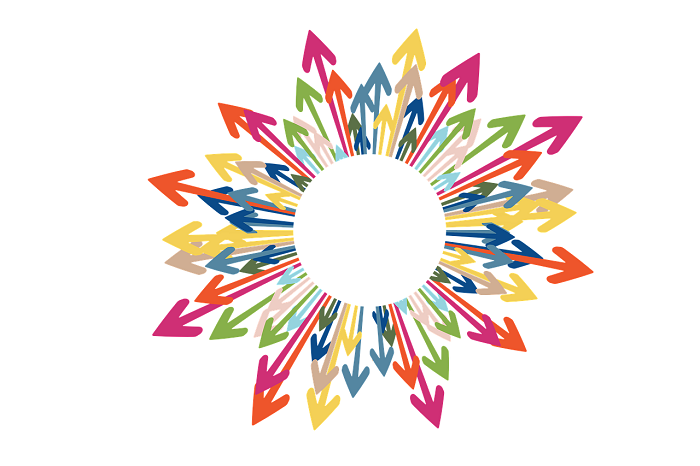- MN ABE Connect
- Archive
- Using ACES/TIF to Foster a Growth Mindset
 January 5, 2018
January 5, 2018
Using ACES/TIF to Foster a Growth Mindset
Stephanie Sommers, ACES Coordinator The inventor Thomas Edison famously said, “Genius is one percent inspiration, ninety-nine percent perspiration.” The meaning of the quote is very clear: intelligence alone is often not enough to be successful. It takes hard work, determination, and persistence to reach our goals.
The inventor Thomas Edison famously said, “Genius is one percent inspiration, ninety-nine percent perspiration.” The meaning of the quote is very clear: intelligence alone is often not enough to be successful. It takes hard work, determination, and persistence to reach our goals.
These “habits of mind” come up again and again in the work of social scientists, educators, and others who strive to define what makes a person successful. They are also woven throughout the skills and subskills that comprise the Transitions Integration Framework (TIF).
Growth mindset
One such idea that is especially important when working with adult learners who might not have had a lot of previous academic success is growth mindset. In a nutshell, having a growth mindset means believing that you can grow and develop your intelligence just as you can grow and develop your skills in other areas.
 A good deal of the research in this area has been done by Carol Dweck, a psychologist currently on the faculty at Stanford University. Dweck and a number of other researchers collaborate and share research and resources through an organization called the Project for Education Research that Scales (PERTS). For those interested in learning more about the importance of mindsets and how to help develop growth mindsets in adult learners, the PERTS website has a very useful Mindset Kit that is a great place to get started. It is also the latest resource to be added to the Self-Management category of the ACES resource library.
A good deal of the research in this area has been done by Carol Dweck, a psychologist currently on the faculty at Stanford University. Dweck and a number of other researchers collaborate and share research and resources through an organization called the Project for Education Research that Scales (PERTS). For those interested in learning more about the importance of mindsets and how to help develop growth mindsets in adult learners, the PERTS website has a very useful Mindset Kit that is a great place to get started. It is also the latest resource to be added to the Self-Management category of the ACES resource library.
Why does growth mindset matter?
To understand why a growth mindset is so important, you first need to understand that there are two main mindsets that have been identified: fixed and growth. People with fixed mindsets believe that we are born with a certain amount of intelligence and that intelligence itself is a fixed trait, like eye color. People with a growth mindset, on the other hand, believe that intelligence can be developed, like a muscle, by trying new strategies for understanding information and approaches to solving problems.
Neuroscientific research supports the idea that our brains are malleable and can create new pathways and connections that, in effect, make us smarter. Students with fixed mindsets tend to believe that they “just aren’t good” at certain things and then use that belief as an excuse to stop trying. In the end, of course, this just creates a self-fulfilling prophecy as they continue to struggle and eventually give up. After all, there isn’t a reason to try if you don’t believe that you can improve.
Clearly, we want our adult learners to have growth mindsets and to believe that they can improve in all academic areas by putting in more effort, trying new approaches and strategies, and learning from their mistakes.
So how do we encourage a growth mindset?
 In the PERTS Mindset Kit, there are resources to help teachers and volunteers learn how to praise the process and effort, rather than the person or product, when giving feedback. This is important because students develop a growth mindset when they believe that they succeed by working hard on something and not by simply “being smart.”
In the PERTS Mindset Kit, there are resources to help teachers and volunteers learn how to praise the process and effort, rather than the person or product, when giving feedback. This is important because students develop a growth mindset when they believe that they succeed by working hard on something and not by simply “being smart.”
There are also downloadable activity ideas for ways to celebrate mistakes in your classroom so that students understand that mistakes are necessary for learning and growing our intelligence. There is a growth mindset lesson plan, co-developed by Khan Academy, that helps teachers talk to students about current brain research and the benefits of having a growth mindset. One activity from the lesson plan is called Letter to a Future Student, and it encourages students to reflect on a learning-related struggle that they have faced, focusing on how they eventually become better at the task. The lesson plan also contains links to several videos and TED Talks, as well as other resources.
Lastly, the Mindset Kit contains assessment ideas that promote a growth mindset, such as giving a grade of “Not Yet” when students are still working towards mastery. This type of feedback helps students to understand that they can persist and improve when facing a challenge.
How does this relate to the TIF skills?
The PERTS Mindset Kit is different from many of the other resources to be included in the ACES Resource Library in that it doesn’t directly support the development of the skills and subskills within the various TIF categories. It’s actually the opposite: through examining the mindset research, I see an opportunity to use many of the activities in the TIF to help students develop a growth mindset. For example:
- Using appropriate praise in the classroom falls under the category of Effective Communication
- Encouraging active reflection on learning is included in the Critical Thinking category
- Understanding how one learns best and what comprehension strategies to use is included in the Learning Strategies category
- Having a classroom culture that encourages setting goals and taking risks falls under the category of Self-Management
In this new year, I hope that many of you look again at ACES/TIF and see a new purpose for teaching these truly vital skills.
Newsletter Signup
Get MN ABE Connect—the official source for ABE events, activities, and resources!
Sign UpArticle Categories
- ABE Foundations/Staff Onboarding
- ACES/Transitions
- Adult Career Pathways
- Assessment
- CCR Standards
- Citizenship
- COVID-19
- Cultural Competency
- Digital Literacy/Northstar
- Disabilities
- Distance Learning/Education
- ELA
- Equity/Inclusion
- ESL
- HSE/Adult Diploma
- Listening
- Math/Numeracy
- Mental Health
- Minnesota ABE
- One-Room Schoolhouse/Multilevel
- Professional Development
- Program Management
- Reading
- Remote Instruction
- Science
- Social Studies
- Speaking/Conversation
- Support Services
- Teaching Strategies
- Technology
- Uncategorized
- Volunteers/Tutors
- Writing